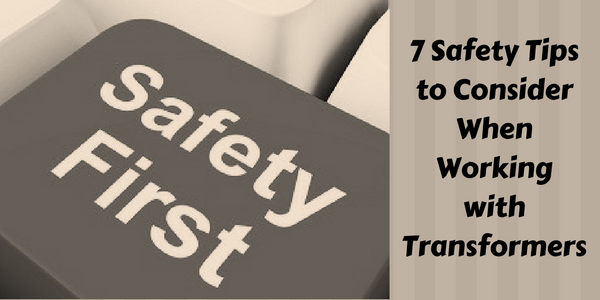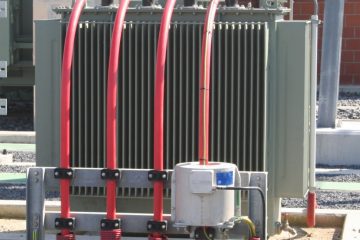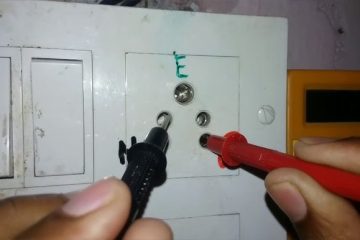Transformers are indispensable in electrical systems, playing a critical role in power distribution and management. However, working with transformers involves inherent risks due to their high voltage capacities. At Just HardRich Global Resources Limited, we prioritize safety and excellence in all our electrical power and control engineering projects. Ensuring the safe operation and maintenance of transformers is essential to protecting both equipment and human health. Here are seven essential safety tips to consider when working with transformers.
1. Thoroughly Inspect Your Transformer
Before installation and periodically during operation, it’s crucial to inspect your transformer thoroughly. Look for any signs of damage such as burnt odors, damaged power cords, connectors, or improperly installed parts. Early detection of potential issues can prevent equipment failure and maintain a safe working environment.
Practical Tips:
- Visual Check: Regularly conduct a visual inspection to identify any obvious damages.
- Olfactory Check: Smell for any burnt odors which could indicate overheating or electrical faults.
- Connection Check: Ensure all power cords and connectors are intact and properly connected.
2. Keep the Power Off When Working
Always ensure that the power is off when working on the transformer. This reduces the risk of electrical shock or accidents due to electrical leakage or continuity between the current source and the system.
Practical Tips:
- Lockout/Tagout Procedures: Implement lockout/tagout procedures to ensure the transformer remains de-energized during maintenance.
- Test for Voltage: Use appropriate testing equipment to confirm that there is no electrical current before commencing work.
3. Use Protective Equipment
Wearing the appropriate protective equipment is essential when working with transformers. This includes gloves, safety goggles, and insulated tools. Additionally, adhere to specific ratings for the transformer’s voltage output and ensure overcurrent protection is set to the manufacturer’s standards.
Practical Tips:
- Personal Protective Equipment (PPE): Always wear PPE designed for electrical work.
- Insulated Tools: Use tools with proper insulation to prevent accidental contact with live parts.
- Follow Manufacturer’s Guidelines: Adhere to all specified protection settings to safeguard against overcurrent.
4. Understand Maximum Voltage Requirements
Knowing the maximum voltage requirements of your transformer is vital to prevent system overload. Overloading can cause significant damage and pose safety risks. Understanding that multiple transformers can help balance impedance and load distribution is key to maintaining system stability.
Practical Tips:
- Load Calculation: Accurately calculate the load requirements and ensure they do not exceed the transformer’s capacity.
- Load Balancing: Use multiple transformers to distribute loads evenly and prevent overloading.
5. Maintain a Clutter-Free Work Area
Keeping spare nuts, bolts, and other objects away from your work area is crucial. These items can accidentally fall into the transformer, causing short circuits or damage.
Practical Tips:
- Organized Workspace: Keep your workspace organized and free of loose objects.
- Use Trays or Containers: Store small parts in trays or containers to prevent them from rolling into the transformer.
6. Ensure Proper Grounding
Proper grounding of your transformer is essential to prevent static electricity build-up and protect the coils from contacting the enclosure or core. Grounding provides a safe path for fault currents, reducing the risk of electric shocks.
Practical Tips:
- Grounding Techniques: Follow industry-standard grounding techniques and ensure all connections are secure.
- Regular Inspections: Regularly inspect grounding connections for integrity and ensure they are free of corrosion.
7. Keep Your Transformer Dry
Moisture can cause significant damage to transformers and create safety hazards. Always keep your transformer and its components dry. Additionally, set up caution signs to warn unskilled onlookers to keep away from potential dangers.
Practical Tips:
- Moisture Control: Use dehumidifiers or silica gel to keep the transformer dry, especially in humid environments.
- Protective Enclosures: Use enclosures to shield transformers from water exposure.
- Safety Signage: Place clear and visible warning signs around the transformer area to keep unskilled personnel at a safe distance.
Conclusion
Working with transformers demands a rigorous approach to safety to prevent equipment failure and protect personnel. By following these seven safety tips, you can ensure the safe and efficient operation of transformers. At Just HardRich Global Resources Limited, we are committed to delivering top-tier electrical power and control engineering services with a focus on safety, reliability, and customer satisfaction. For expert advice and assistance with your electrical needs, contact us today.




